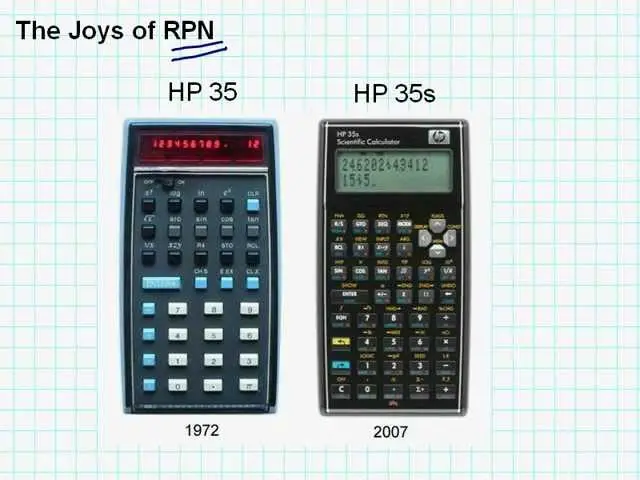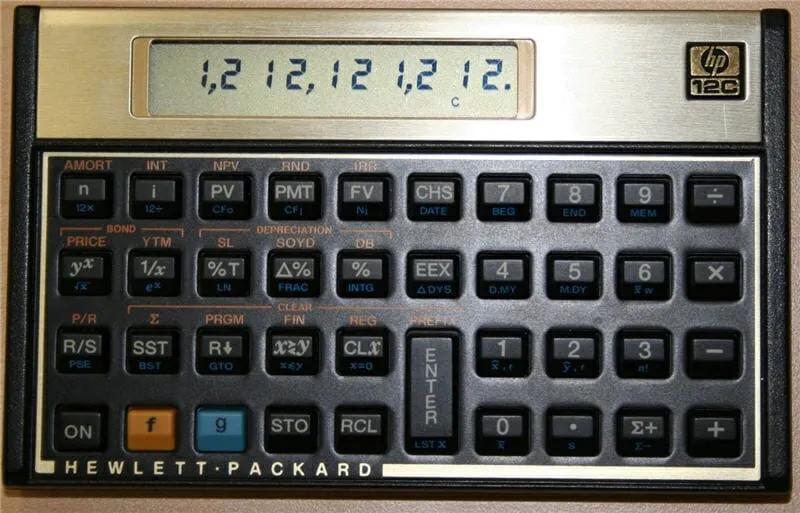Reverse Polish Notation (RPN) is a method of expressing arithmetic expressions without the use of brackets to define the order of operations. This notation was popularized by Hewlett Packard (HP) calculators and has become a standard in the field of calculators and computer programming.
How Does Reverse Polish Notation Work?
In RPN, numbers and operators are listed one after another, without any brackets. The operators always act on the most recent numbers in the list, which can be thought of as a stack. The most recent number is at the top of the stack, and operators take the appropriate number of arguments from the top of the stack and replace them with the result of the operation.
For example, let's take the expression (3 + 5) * (7 - 2) in ordinary notation. In RPN, this expression would be written as:
3 5 + 7 2 - *
Reading from left to right, this RPN expression is interpreted as follows:
 Hp ceo list: past & present leaders | hewlett packard
Hp ceo list: past & present leaders | hewlett packard
- Push 3 onto the stack
- Push 5 onto the stack
- Pop the top two numbers from the stack (3 and 5), add them together, and push the result (8) onto the stack
- Push 7 onto the stack
- Push 2 onto the stack
- Pop the top two numbers from the stack (7 and 2), subtract the second number from the first, and push the result (5) onto the stack
- Pop the top two numbers from the stack (8 and 5), multiply them together, and push the result (40) onto the stack
At the end of this process, the stack will contain the final result of the expression, which in this case is 40.
Advantages of Reverse Polish Notation
RPN has several advantages over ordinary notation:
- Eliminates the need for brackets: In RPN, the order of operations is determined solely by the order of the operators, without the need for brackets to indicate priorities. This simplifies the expression and reduces the chances of errors.
- Reduces ambiguity: RPN eliminates the ambiguity that can arise from multiple interpretations of an expression in ordinary notation. The order of operations is clear and unambiguous in RPN.
- Efficient and faster calculations: RPN allows for faster calculations on calculators and computers as it eliminates the need for parsing and evaluating brackets and priorities.
Q: Are all Hewlett Packard calculators RPN-based?
A: No, not all Hewlett Packard calculators are RPN-based. While RPN was popularized by HP calculators and is commonly associated with them, HP also produces calculators that use algebraic notation.
Q: Can RPN be used in programming languages?
A: Yes, RPN can be used in programming languages. Some programming languages, such as Forth, are based on RPN. Additionally, RPN can be implemented in other programming languages using stacks or other data structures.
 Hewlett packard agency: experts for hp inc. | seo-optimized title
Hewlett packard agency: experts for hp inc. | seo-optimized titleQ: Is RPN still relevant in modern calculators and software?
A: Yes, RPN is still relevant in modern calculators and software. While algebraic notation is more commonly used in everyday calculations, RPN is preferred by some professionals and enthusiasts due to its efficiency and simplicity.
Hewlett Packard calculators popularized the use of Reverse Polish Notation (RPN) for expressing arithmetic expressions. RPN eliminates the need for brackets and provides a clear and unambiguous order of operations. It offers advantages such as simplicity, efficiency, and reduced ambiguity. Although not all HP calculators are RPN-based, RPN remains relevant in modern calculators and programming languages. Understanding RPN can enhance your mathematical and programming skills, and it continues to be a valuable tool in various fields.

